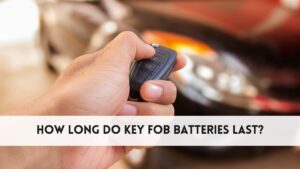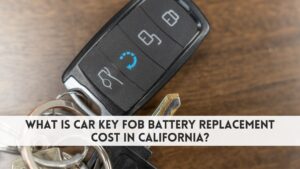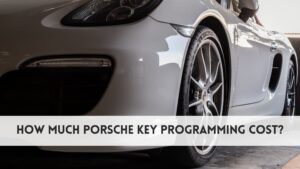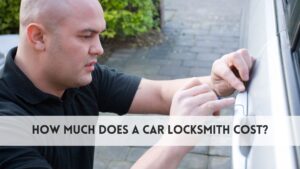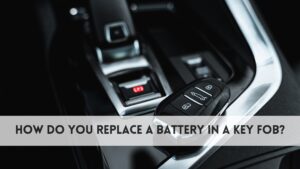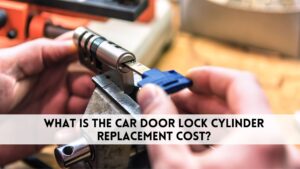Replacing your car key fob battery can be a quick fix, but it often raises an important question: Do I need to reprogram key fob after changing battery? Many vehicle owners in San Bernardino, CA, encounter this concern when their fob fails to function correctly after a battery change. In most cases, key fobs retain their programming, but certain situations—such as prolonged battery removal or internal electronic issues—may require reprogramming. Understanding how your key fob works and the circumstances that can affect its programming helps you avoid unnecessary stress and ensures your vehicle’s security and convenience remain intact after a battery replacement.
How a Key Fob Works?
A key fob is an essential component of modern vehicle security and convenience, acting as a wireless remote that interacts directly with your car’s systems. It works through a combination of advanced technology designed to ensure both functionality and safety.
- Transponder chip – Sends a unique, encrypted code to the car’s receiver to verify access.
- Radio frequency signal – Enables features such as remote locking, unlocking, and in some cases, push-button engine starting.
- Battery power – Provides the necessary energy to operate the electronics consistently.
When the battery runs low or completely dies, the signal may weaken or fail altogether, preventing the fob from communicating with your vehicle. Understanding how these components work together helps vehicle owners identify potential issues, maintain reliable performance, and take the right steps to restore full functionality if problems occur after battery replacement.
Do I Need to Reprogram Key Fob After Changing Battery?
In most situations, you do not need to reprogram your key fob after changing the battery, as its programming is stored in non-volatile internal memory. This means the unique code that pairs your key fob to your vehicle remains intact during a standard battery replacement. Once the new battery is installed correctly, the fob should function as normal. However, there are specific circumstances where reprogramming may become necessary:
- Battery removed for an extended period – A prolonged loss of power can cause certain fobs to lose synchronization with the vehicle.
- Vehicle’s onboard computer reset – Electrical resets or system faults may erase stored pairing data.
- Internal circuit damage – If the fob’s electronics are compromised, it may no longer transmit the correct signal.
If your fob fails to work after replacing the battery, troubleshooting these scenarios can help determine whether reprogramming is required. For reliable results, professional automotive locksmiths in San Bernardino, CA, can quickly diagnose the issue and restore full functionality. This ensures your vehicle remains secure and your remote operates without interruption.
What Happens When You Replace the Battery?
Replacing a key fob battery is a simple maintenance task, but the outcome can vary depending on the vehicle and the condition of the fob. In most cases, the fob will retain its programming because the pairing data is stored in its internal memory, allowing it to work immediately after the battery swap. Some vehicles, however, may require a brief resynchronization process if the fob experiences an extended loss of power.
In rare situations, a complete reprogramming may be necessary. This typically occurs when the internal electronics reset, the transponder chip is damaged, or the vehicle’s onboard computer encounters an electrical fault and fails to recognize the fob signal. Common scenarios and outcomes include:
| Situation | Does it Require Reprogramming? | Reason |
| Quick battery swap | No | Programming stored in memory |
| Battery removed for days/weeks | Sometimes | Signal pairing lost |
| Damaged internal chip | Yes | Needs complete reset |
| Electrical fault in vehicle | Yes | Car cannot detect signal |
To ensure reliable performance, the fob should be tested immediately after battery replacement. Prompt detection of any issues allows for quick troubleshooting or professional reprogramming by an automotive locksmith in San Bernardino, CA.
How to Reprogram Your Key Fob? (DIY vs. Professional Help)
When a key fob stops functioning after a battery replacement, reprogramming may be required to restore its connection to the vehicle. While some vehicle owners attempt a DIY reprogramming method, the process can be inconsistent and varies between makes and models.
DIY Steps (general guide – always check your car’s manual):
- Sit inside the car with all doors closed.
- Insert and remove the key from the ignition multiple times quickly.
- Turn the ignition to the “On” position without starting the engine.
- Press the lock button on your key fob.
- Turn the ignition off and test the fob.
Although these steps may work for older or simpler systems, professional help offers clear advantages. In San Bernardino, CA, certified locksmiths use specialized diagnostic and programming equipment compatible with all vehicle types, including advanced encrypted systems found in newer models. This ensures:
- Faster results – Often completed in minutes.
- Higher success rate – Eliminates trial and error.
- Guaranteed accuracy – Prevents programming errors that can affect security.
- On-site service – Convenient mobile assistance anywhere in San Bernardino.
For reliable, secure, and efficient key fob reprogramming, professional locksmith services remain the superior choice.
How to Tell If Your Key Fob Needs Reprogramming?
Signs that you might need reprogramming after replacing your battery include:
Completely Unresponsive Buttons
If your key fob doesn’t respond at all after replacing the battery, it may have lost its pairing with the vehicle. While dead batteries are the most common cause, a sudden loss of communication between the fob and the car often indicates the need for reprogramming. Professional automotive locksmiths in San Bernardino, CA, can quickly restore this connection using specialized programming tools.
Partial Functionality
When some features work, such as locking or unlocking doors, but others—like trunk release or remote start—fail, it may signal a programming issue. This partial functionality often occurs if the fob’s coding is partially lost or corrupted during battery replacement. Reprogramming can restore all functions, ensuring your key fob operates at its full capacity without interruptions.
Delayed Signal Response
A noticeable delay between pressing a button and the vehicle responding can point to a communication problem. While weak batteries often cause sluggish responses, if the issue continues after battery replacement, reprogramming may be necessary. Resetting the fob’s synchronization with your car’s system can eliminate delays and restore quick, efficient operation.
“Key Not Detected” Message on Dashboard
If your vehicle displays a “Key Not Detected” warning after you’ve installed a fresh battery, it means the fob is no longer recognized by the car’s security system. This is a strong indicator that reprogramming is required. An expert locksmith can re-establish the secure connection, allowing you to start and operate your vehicle without further issues.
Final Words
So, do I need to reprogram key fob after changing battery? Most key fobs will continue working normally after a battery replacement, as their programming is stored in secure internal memory. However, certain situations—such as prolonged battery removal, electrical faults, or internal damage—can cause the fob to lose synchronization with the vehicle. When this happens, reprogramming is often the quickest and most effective solution.
Testing the fob immediately after replacing the battery ensures any issues are identified early. If problems persist, professional reprogramming offers a reliable fix, restoring all functions and maintaining vehicle security. Understanding how key fobs operate, recognizing the signs of programming loss, and taking prompt action can prevent unnecessary frustration. By following best practices during battery changes and seeking expert help when needed, you can ensure consistent, dependable performance from your vehicle’s key fob.


